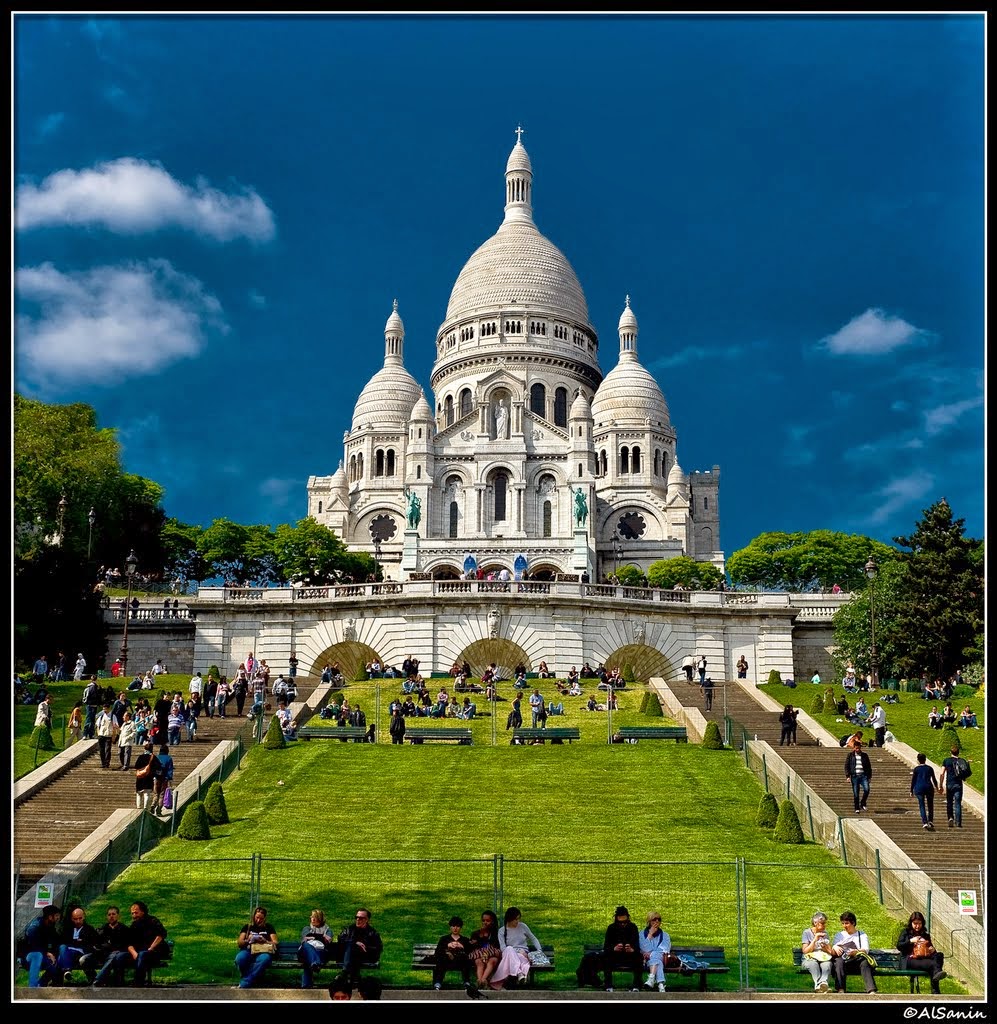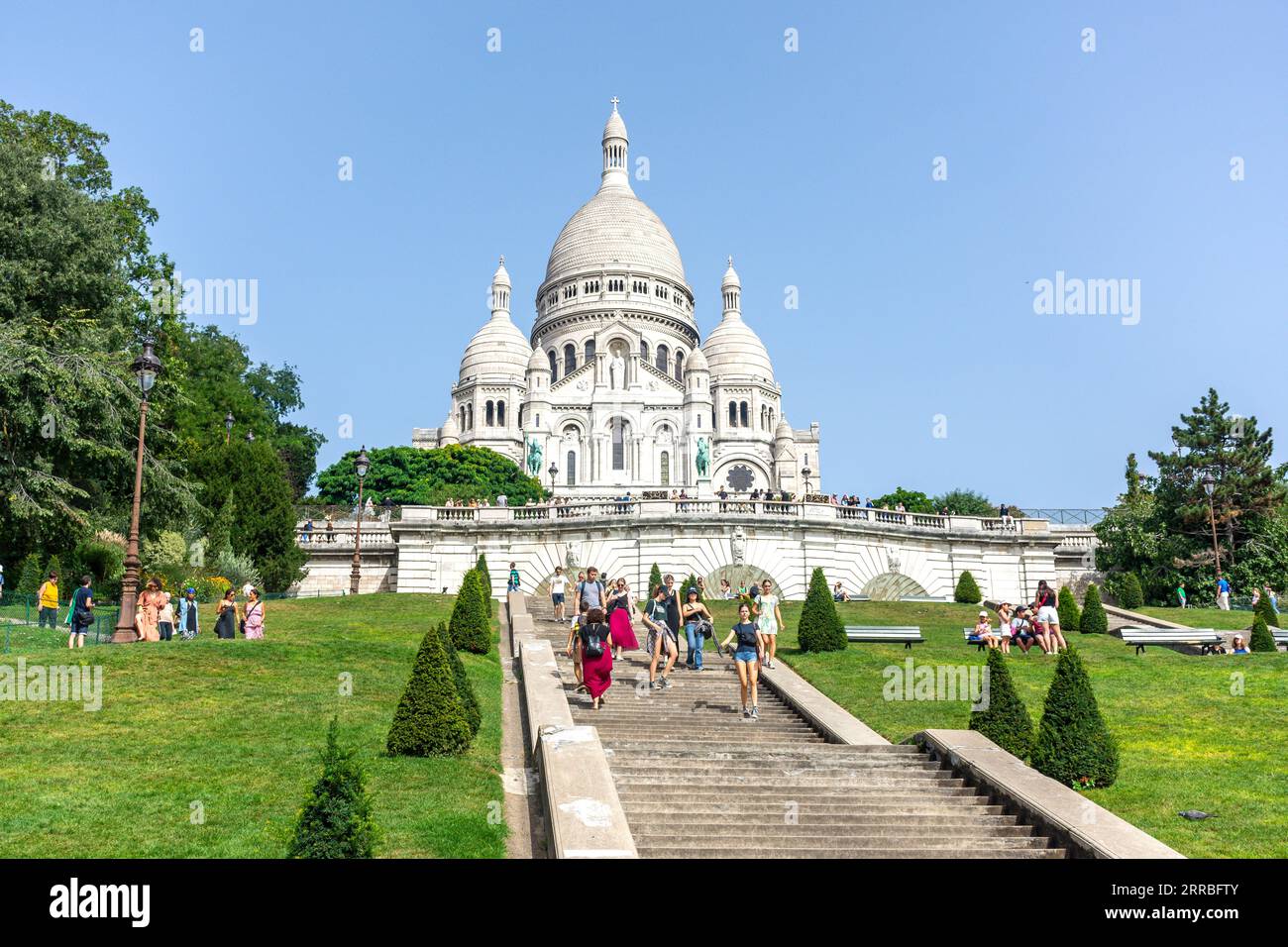Perched atop the butte of Montmartre, the Basilique du Sacré-Cœur stands as a Parisian landmark, its white dome a beacon visible across the city. More than just an architectural marvel, it’s a symbol steeped in history, faith, and controversy, a place where the earthly and the divine seem to converge. To understand its enduring appeal, we can delve into the whispers of history, the pronouncements of pilgrims, and the reflections of those who have gazed upon its majestic form. In doing so, we uncover the basilica’s complex narrative, a story best told through a curated collection of quotes, both real and imagined.
The Burden of History: Genesis and Controversy
The construction of the Sacré-Cœur was born from the ashes of the Franco-Prussian War (1870-1871) and the tumultuous Paris Commune. Its genesis is intrinsically linked to a vow made by Alexandre Legentil and Hubert Rohault de Fleury, who attributed France’s defeat to a spiritual decline. Their promise to build a church dedicated to the Sacred Heart of Jesus became a national project, fueled by donations and political agendas.
- "France, humiliated and defeated, must turn back to God. This basilica will be a testament to our repentance and a plea for divine forgiveness." (Imagined, reflecting the sentiments of Alexandre Legentil)
This imagined quote captures the initial impetus behind the basilica’s creation. It was conceived as an act of national contrition, a way to atone for perceived sins and restore France’s spiritual standing. However, this very origin made the basilica a point of contention. To some, it represented a symbol of conservative Catholicism, a reaction against the secularizing forces of the Third Republic.
- "The Sacré-Cœur is a monument to reactionary forces, built to expiate the sins of the Communards. It stands as a constant reminder of their defeat." (Imagined, representing a socialist critique)
This counterpoint highlights the political baggage the basilica carried from its inception. The location itself, Montmartre, was a stronghold of the Commune, making the construction of a church dedicated to national repentance a deeply provocative act.
Despite the controversy, the project moved forward, entrusted to architect Paul Abadie. His Romanesque-Byzantine design, chosen in a competition, aimed to create a building that was both monumental and spiritually uplifting.
- "I envision a basilica of light, a beacon of faith that will draw the eye and lift the soul. It will be a testament to the enduring power of the Sacred Heart." (Imagined, reflecting the vision of Paul Abadie)
Abadie’s vision was to create a building that would inspire awe and devotion. He chose travertine stone from Château-Landon, a material known for its self-cleaning properties, ensuring the basilica would retain its brilliant white appearance for generations to come.
A Beacon of Faith: Pilgrimage and Devotion
From its completion in 1914, the Sacré-Cœur became a major pilgrimage site. Millions of visitors flock to its doors each year, drawn by its architectural grandeur, its spiritual significance, and the panoramic views it offers of Paris.
- "The Sacré-Cœur is a place of profound peace. Standing within its walls, I feel a sense of connection to something greater than myself." (Anonymous pilgrim testimonial)
This sentiment, repeated by countless visitors, speaks to the basilica’s ability to inspire a sense of transcendence. The hushed atmosphere, the soaring arches, and the intricate mosaics all contribute to an environment conducive to contemplation and prayer.
The central focus of devotion within the basilica is the Sacred Heart of Jesus, a symbol of divine love and compassion.
- "In the Sacred Heart, we find solace and hope. It is a reminder that even in the darkest of times, God’s love endures." (Imagined, reflecting a common theological interpretation)
The image of the Sacred Heart, often depicted with flames emanating from it, represents the burning love of Christ for humanity. This symbolism resonates deeply with many pilgrims, who seek comfort and guidance in their faith.
Art and Architecture: A Visual Theology
The Sacré-Cœur is not only a place of worship but also a masterpiece of art and architecture. Its Romanesque-Byzantine style, a departure from the Gothic architecture prevalent in many other Parisian churches, creates a unique and striking visual identity.
- "The basilica’s design is a symphony of curves and light. It is a testament to the skill and artistry of its creators." (Art historian’s observation)
The basilica’s architecture is characterized by its rounded arches, its massive dome, and its intricate mosaics. The use of light is particularly effective, creating a sense of ethereal beauty.
The interior of the basilica is adorned with stunning mosaics, the most famous of which is the Christ in Majesty mosaic in the apse, one of the largest in the world.
- "That mosaic is breathtaking. The size and scope, the color and detail… it’s truly an amazing feat of artistry." (Tourist comment)
The Christ in Majesty mosaic depicts Jesus Christ with his arms outstretched, welcoming all who come to him. The mosaic is a powerful visual representation of the basilica’s central message of divine love and compassion.
Beyond the Religious: A Cultural Icon
While the Sacré-Cœur remains a place of worship and pilgrimage, it has also become a cultural icon, a symbol of Paris that transcends religious boundaries. Its image is ubiquitous, appearing on postcards, posters, and countless photographs.
- "The Sacré-Cœur is a part of the Parisian skyline, as recognizable as the Eiffel Tower. It’s a symbol of the city’s beauty and its history." (Tourist comment)
The basilica’s prominent location on Montmartre, combined with its distinctive white dome, makes it a highly visible landmark. It has become an integral part of the Parisian landscape, attracting visitors from all over the world.
Montmartre itself, with its artistic heritage and bohemian spirit, adds to the allure of the Sacré-Cœur. The square in front of the basilica is often filled with artists, musicians, and street performers, creating a vibrant and lively atmosphere.
- "Montmartre is a place of creativity and inspiration. The Sacré-Cœur, standing guard over the neighborhood, seems to inspire us all." (Local artist’s reflection)
The combination of the basilica’s spiritual significance and Montmartre’s artistic energy creates a unique and compelling atmosphere.
Conclusion: A Lasting Legacy
The Basilique du Sacré-Cœur de Montmartre is more than just a building; it is a symbol of faith, history, and culture. Its story is a complex one, filled with controversy and devotion, political agendas and artistic inspiration. Through the voices of those who have shaped its narrative, both real and imagined, we gain a deeper understanding of its enduring appeal. From the initial vow to build a church of national repentance to its current status as a beloved landmark, the Sacré-Cœur continues to inspire awe, contemplation, and debate. It stands as a testament to the power of faith, the enduring legacy of art, and the complex relationship between the sacred and the secular. Its white dome, visible from across Paris, serves as a constant reminder of the city’s rich history and its enduring spiritual heart. The symphony of stone and sentiment that is the Sacré-Cœur continues to resonate, echoing through the centuries and inviting all who encounter it to reflect on the mysteries of faith and the beauty of the human spirit.


